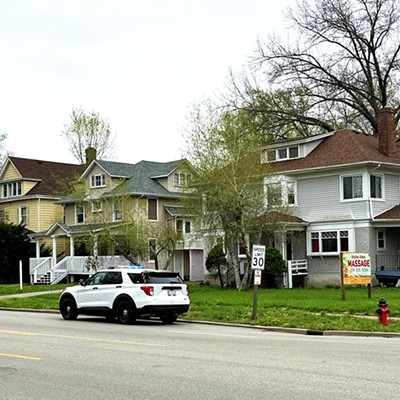
The event was advertised as a “policy breakfast,” but the Citizens Club of Springfield didn’t provide sweet rolls or donuts, much less any sizzling pork. The only refreshment offered was hot coffee, which seemed appropriate given the sobering nature of the program — the achievement gap between black and white students in Springfield public schools.
The topic was tackled by Mayor Tim Davlin’s education liaison Sheila Stocks-Smith and Nina Harris, president and CEO of The Springfield Urban League. They presented the highlights of their report on the “shockingly low levels of achievement” among African-American students.
Their report, published in September, is the result of three years of research, and proves the problem in no uncertain statistical terms: Graduation rates for African-American males is as low as 59 percent, according to the study. Black kids accounted for more than half of all high-school suspensions, even though they comprise only 32 percent of the student population. African-American students, as a group, perform substantially below their white peers on every standardized test.
It’s an issue everyone knows about and acknowledges on a general level, but one that’s easy to dismiss as impossible to solve. As one audience member said to the panelists: “Your report is just the same old same old.” Another audience member suggested that the only solution was more parental involvement.
But one of the recommendations contained in the report provides a key that could shift the educational landscape in Springfield immediately — and for free. Simply restricting the district’s liberal transfer policy could quickly level the playing field among District 186’s three high schools, the study suggests.
In an interview after the breakfast presentation, Stocks-Smith said that she was
surprised by the transfer data discovered during this study. Between 2002 and
2006, almost 700 white high school students transferred away from their
neighborhood school. About 80 percent of those students transferred to
Springfield High School. What Stocks-Smith found most shocking was the reason
most students provided for transferring, which was “other.”
“There wasn’t even an attempt to categorize it,” she says.
If district officials have a set of criteria used to determine which students are granted transfer requests and which students are denied, it isn’t publicly available. Ending this “very liberal transfer policy” would mean that Southeast High School wouldn’t lose 80 white students every year, or about a quarter of its student population over four years.
“You would be adding 25 percent more white students,” Stocks-Smith says. “And since minority and low-income statistics tend to correlate fairly closely,
you would have a different dynamic at all three of our high schools.”
For example, schools with higher-income students tend to have the best teachers — those with master’s degrees and years of experience. Schools populated with lower-income kids have the opposite — less-educated, less-experienced teachers. Restricting transfers, so that students attend their neighborhood high schools, could bring better teachers to Southeast and Lanphier high schools.
“I think a lot of things would adjust — resources for the schools, parent involvement,” Stocks-Smith says. “With more higher-income families, you tend to get parents who can afford to
support the PTO or buy new beakers for the science lab. Some of those indirect
benefits would come along.”
Aside from a polite e-mail complimenting the report from District 186
Superintendent Walter Milton, Stocks-Smith says she hasn’t heard from Springfield school officials. Last month, she sent Milton and Board
of Education members a letter requesting a written response to each of the 28
recommendations in the report. She emphasized that the study group’s recommendation to restrict transfers “except in extraordinary situations” could be implemented immediately and had the potential to “dramatically alleviate some of the . . . inequities in our high schools.”
She asked for a response by Dec. 19.
Contact Dusty Rhodes at [email protected].




















